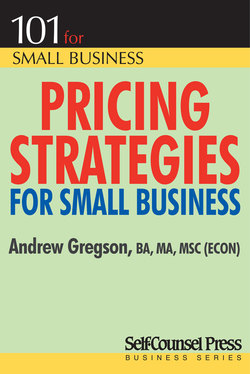Читать книгу Pricing Strategies for Small Business - Andrew Gregson - Страница 43
На сайте Литреса книга снята с продажи.
Myth Busting: Market Share
ОглавлениеIt is a common mistake to expect to grab market share by dropping a price. Not only do marketers think this, but so do salespeople in the hope of getting a sale to boost their numbers. But market share precedes profitability, not the other way around.
A common myth in the marketing world is that market share is the key to profitability. Robert Jacobson and David Aaker in their 1985 article in the Journal of Marketing, “Is Market Share All That It’s Cracked Up To Be?” examined this pervasive myth. If you consider the companies on the planet that have dominated their industries that would mean some gigantic companies like GM, Ford, and Philips should also be hugely profitable. The contrary is true. In fact, these companies have experienced significant financial setbacks, especially as of late.
Nevertheless some large companies with huge market share command huge profits, like Microsoft. Why? Perhaps it’s because both profitability and market share are caused by the same underlying source of business success; a sustainable competitive advantage in meeting customer needs and doing so more efficiently. When a company has a competitive advantage that makes it stand out from the crowd, it can earn higher margins due to either higher prices or a lower cost of production.
A strong competitive advantage, if sustainable, also discourages competitors from targeting the company’s customers or from effectively stonewalling its attempts to expand. In reverse, a less efficient company with large market share would find itself targeted by lean and mean competitors ready to slice off chunks of market share with price competition. What this means is that market share is not the path to huge profits, but rather a further indicator of a well-run company.
Unfortunately, the received wisdom among many managers is the contrary and they perceive a cause and effect, and seek to change that by engaging in a price war to drive out competitors. Much of the time the hoped-for profits never materialize. In fact, profits take a huge hit in the company instigating a price war.
It follows, therefore, that the objective of a plan for company growth should not be to achieve sales volumes but to create and sustain a competitive advantage. Look at the two exemplars of this. Wal-Mart entered the retail market long after Sears. Wal-Mart was a hugely profitable company long before it came to dominate the market and then challenge Sears. Sears, as market leader, reported poor profits for decades, making it vulnerable to Wal-Mart’s aggression.
A strategic plan created to gain market share by dropping prices or accepting higher costs like free delivery is likely doomed to failure. The collapse of margins makes companies vulnerable to ruthless and deep-pocketed competitors. When they drop prices even more steeply, the instigator of a price war may not be able to follow easily.
Rather, it is important to realize that the connection is between profits and real competitive advantage. If the competition cannot follow, then prices are safe, volumes will grow, and profits will soar.
